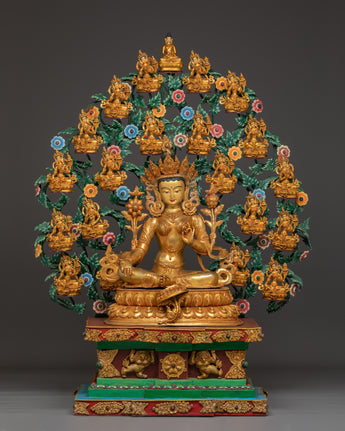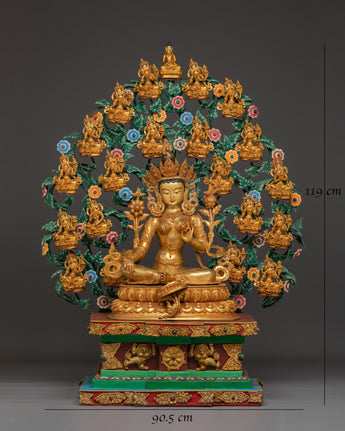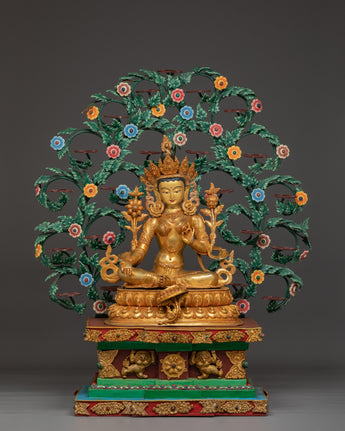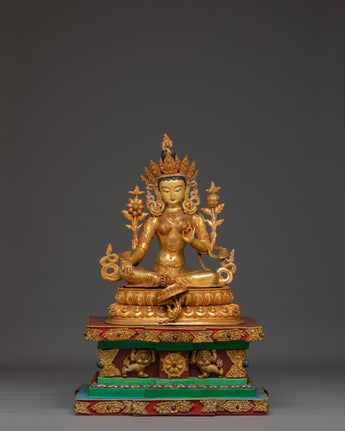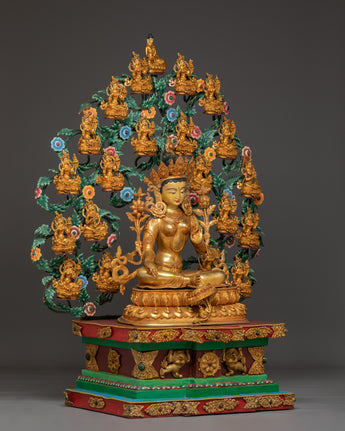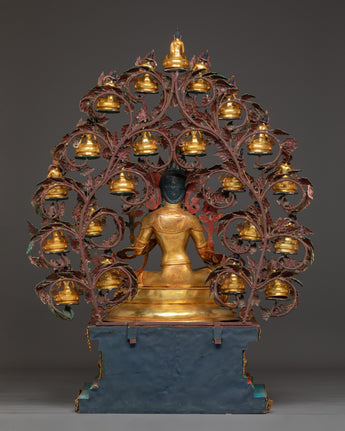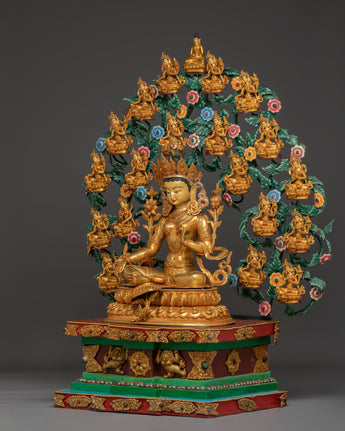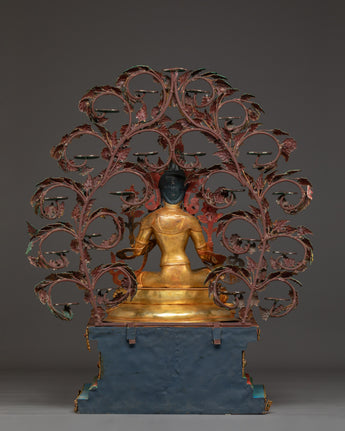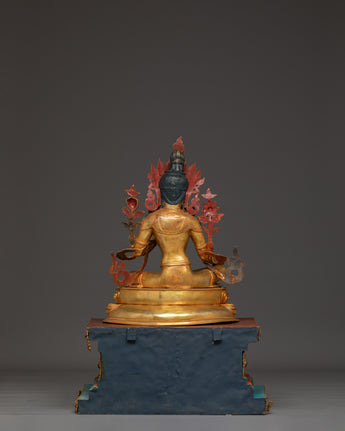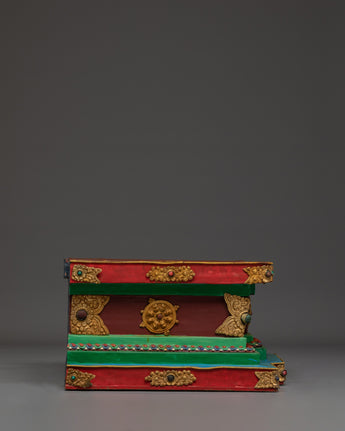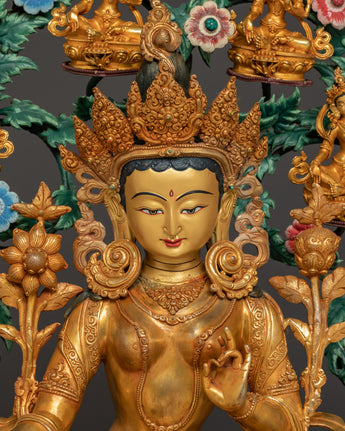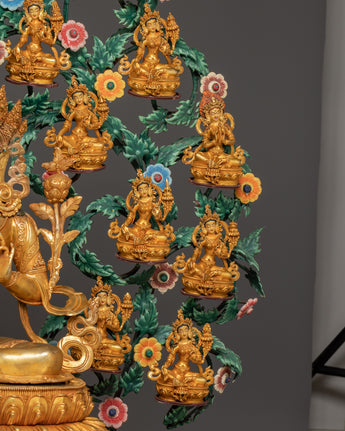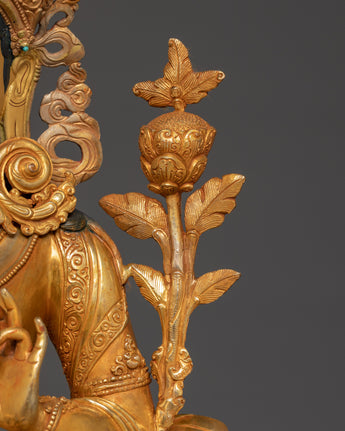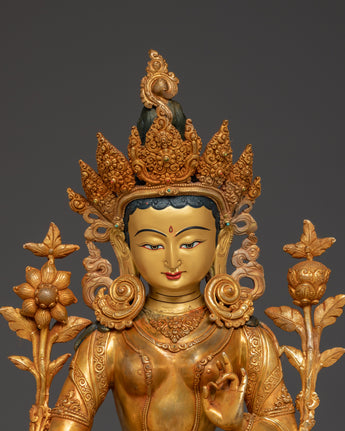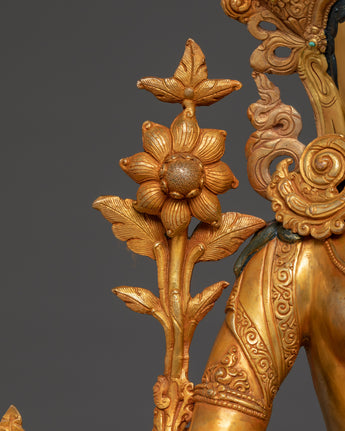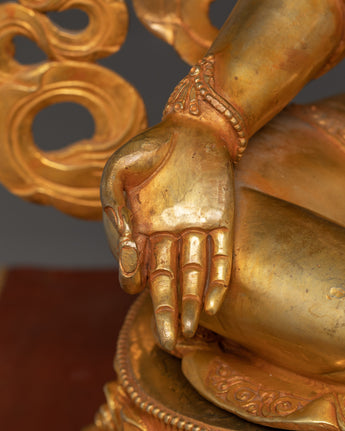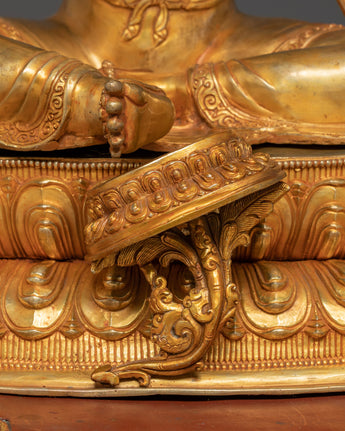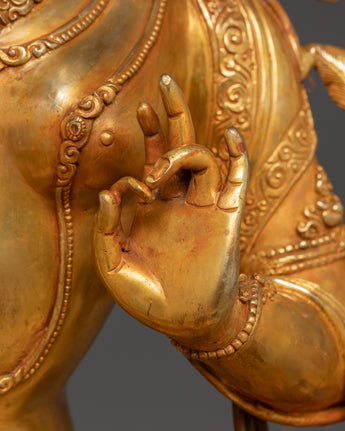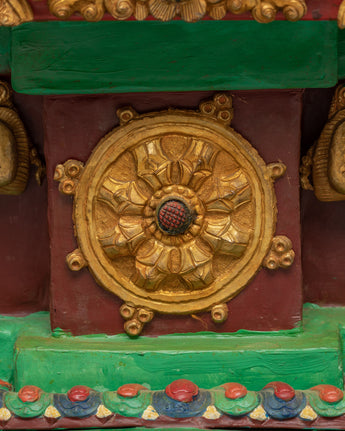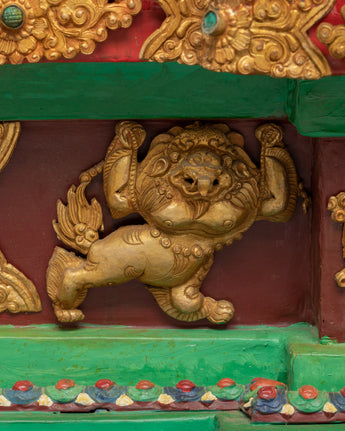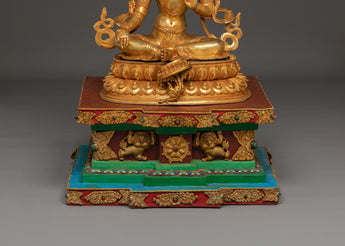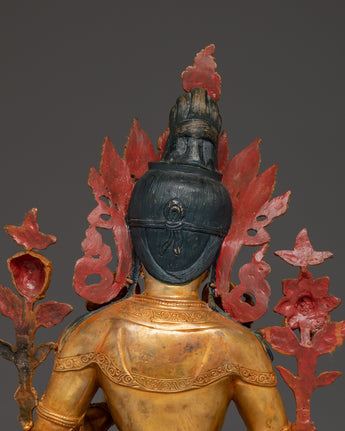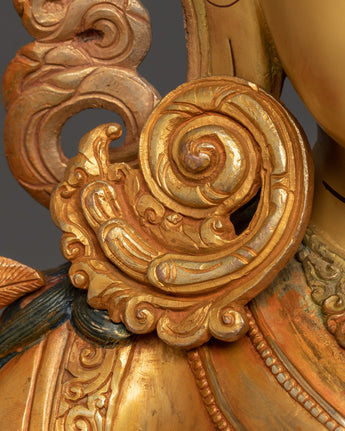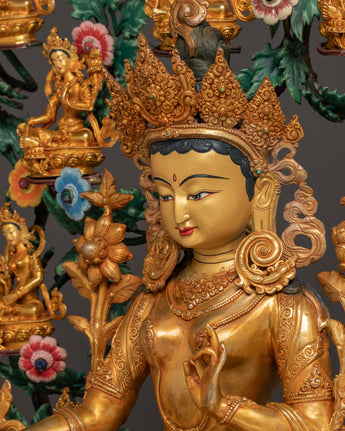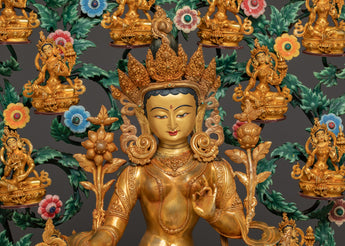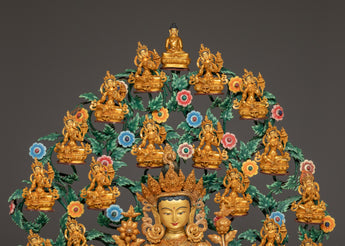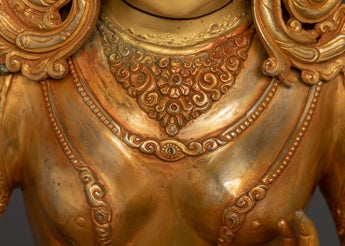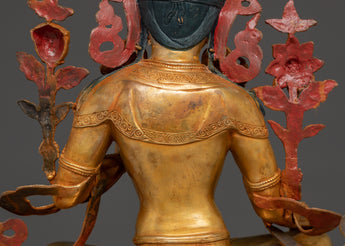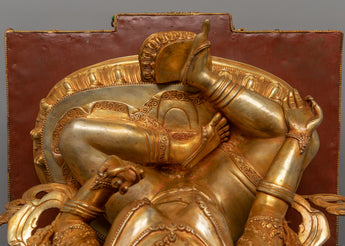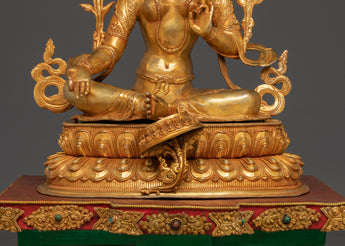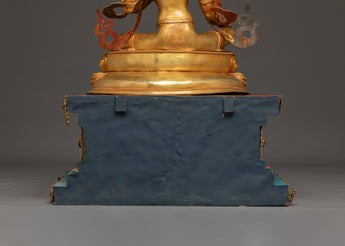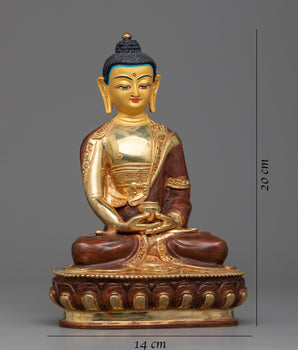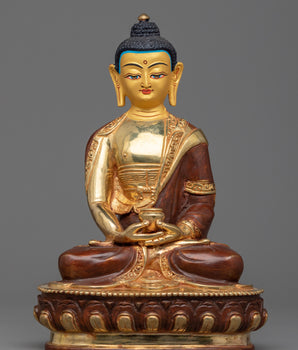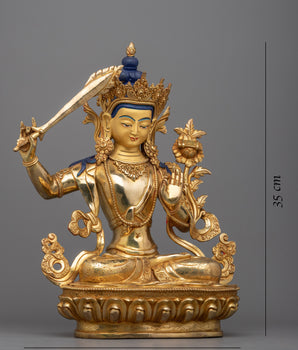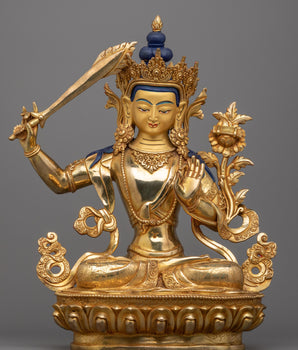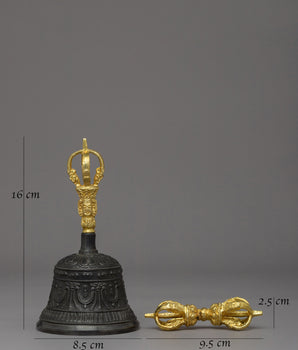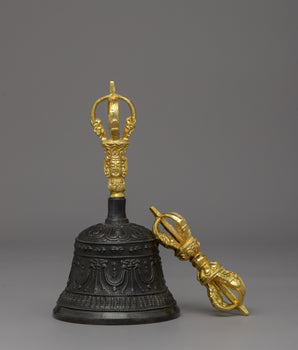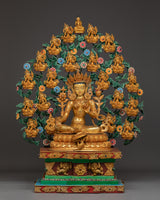
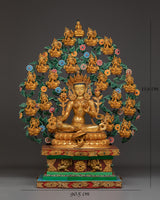
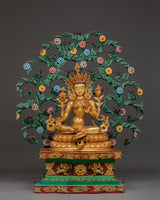
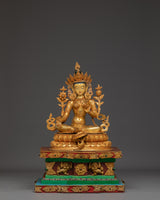
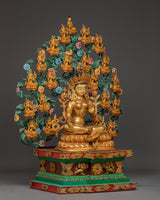
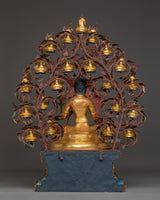
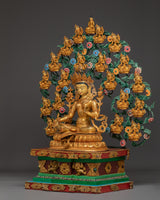
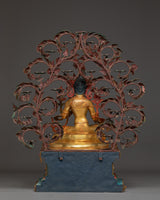
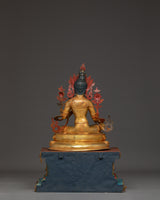
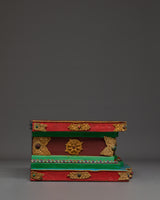
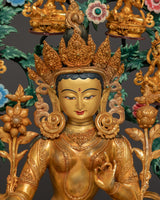
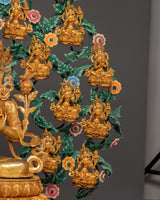
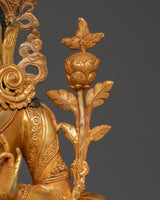
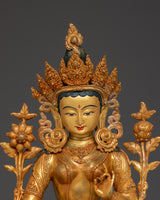
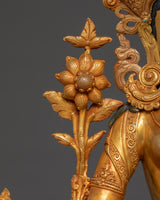
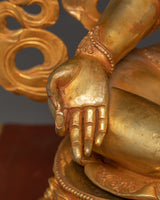
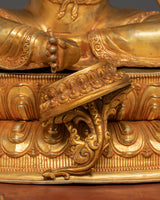
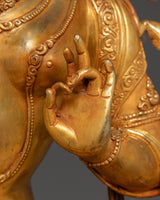
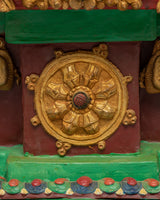

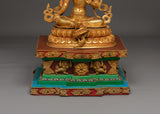
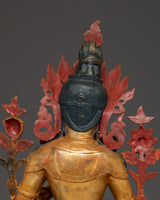
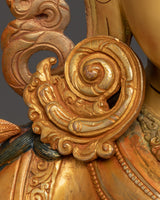
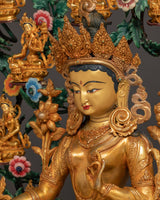
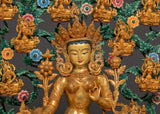
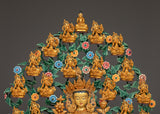
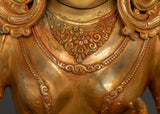
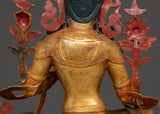
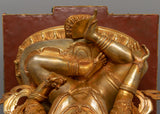
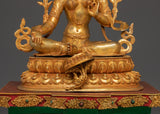
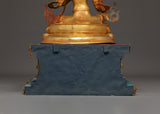
Divine Sacred 21 Tara Set | Tibetan Buddhist Altar Zen Decor

100% AUTHENTIC

HANDMADE

FREE SHIPPING
Divine Traditional 21 Tara Set | Collection of Swift Compassion & Liberation
----------------------------------------------
Size: 119cm(Height) x 90.5cm(Width)
Width: 90.5cm
Weight: 52.52kg
Materials: Copper Body, Main Statue 24K Gold Plated, Small Statues Electro Gold Plated, Acrylic Color
----------------------------------------------
About Our Statue:
The 21 Tara Set embraces the rich spiritual legacy of Mahayana and Vajrayana Buddhism by depicting the twenty-one forms of Tara, the loving female bodhisattva. Each Tara reflects unique enlightened traits such as fearlessness, healing, blessing, and prompt compassionate aid. Green Tara, seated in the middle, is adored as the leader and source of loving action, surrounded by her twenty emanations in a symbolic tree-like structure.
This sacred 21 Tara Set, meticulously created by Nepalese artists, has a center Green Tara statue embellished with 24K gold plating, surrounded by twenty smaller Tara sculptures electro-gold plated and detailed with bright acrylic colors and handcarved jewels. The set's large size—119cm tall by 90.5cm wide—and copper craftsmanship give it a strong presence in any spiritual altar or meditation place. Green Tara, the leader of the twenty-one, extends her right hand in the Varada Mudra for blessings and protection, while her left hand forms the Three Jewels Mudra, symbolizing devotion to the Buddha, Dharma, and Sangha. Her central placement highlights her as the source of all compassionate activity
Together, the 21 Tara Set symbolizes the full spectrum of compassionate action, addressing the varied needs and aspirations of practitioners. Traditionally, practitioners recite the "Praises to the 21 Taras" prayer to invoke the blessings of these deities, calling upon specific Taras for support or protection. Owning a complete set of 21 Tara statues is considered highly auspicious, creating a strong spiritual presence that aids meditation, protection, and the realization of enlightened intentions. Each statue is carefully crafted, blending symbolic significance with artistic beauty to embody Tara’s deep compassion, wisdom, and enlightened energy.
Each Tara statue has distinct mudras and emotions that represent special benefits such as quick protection, healing, and empowerment. The sculptures are set on lotus thrones, with tree-like features above them to represent their distinct characteristics. This gorgeous set is a powerful spiritual tool for practitioners seeking protection, compassion, and enlightenment, as well as a beautiful addition to your sacred space with exceptional ethnic creativity.
Introduction To the 21 Form Of Tara :
Tara has 21 effective forms, each tied to a specific color, and energy is visualized in this Buddhist statue. According to tantric teaching, within this human body, we have twenty-one knots. These are in pairs, and they obstruct or block our channels. As we release each pair of knots through practice, we obtain a specific experience or realization. After removing all 21 knots, we are known as enlightened beings, having attained Buddhahood.
The 21 forms of Tara are :
Nyurma Pamo (Red Tara), Loter Yangchenma (White Tara), Sonam Tobche (Golden Tara), Tsugtor Namgyalma (Golden Tara), Wangdu Rigje Lhamo (Red Tara), Jigje Chenmo (Dark Red Tara), Zhengyi Mithumba (Dark Blue Tara), Zhengyi Migyalma (Dark Red Tara), Sengdeng Nagchi (Emerald Green Tara), Jigten Sumle Gyalma (Red Tara), Phagma Norter Drolma (Orange Tara), Tashi Donje (Golden Yellow Tara), Yulle Gyalma(Dark Red Tara), Thronyer Chen(Tara in dark rain-cload colour), Rabzhima(White Tara with a blue Lotus), Rigngag Tobjom, Pagme Nonma, Maja Chenmo, Dugkarmo, Rito Loma Jonma, and Lhamo Ozer Chenmaand (White Tara with a blue lotus on a golden fish).
How do you take care of your statues?
• Place them at room temperature, avoiding direct sunlight.
• Make sure that the area where your statue is placed is entirely free of moisture and dust.
• Place it at the highest place on your altar after being consecrated by a Lama/monks. The best practice is to keep them covered inside a
glass cabinet.
• Do not use your bare hands or any objects with a rough surface to wipe the face. Directly touching the face with the bare hand can
smudge the face, leaving scratches.

